There are now digital solutions to simplify just about every aspect of office work. Third-party applications can start to pile up, seemingly as fast as they hit the market. How many apps does your firm use to prepare a single 1040? Maybe one to collect e-signatures, one to annotate workpapers, one to manage documents…
Productiv’s The State of SaaS Sprawl in 2021 report analyzed hundreds of companies and over 30k applications. It found that most departments use an average of 40-60 apps—and most companies use over 200. Without careful planning and integration, Software as a Service (SaaS) solutions at that volume can lead to what experts call “SaaS sprawl.”
What is SaaS sprawl?
SaaS sprawl occurs when companies accumulate so many digital applications that administrators can no longer manage them. This typically happens when businesses adopt new solutions without strategizing how to integrate them into their existing workflow.
This phenomenon reached critical mass in 2020 when companies were forced to go remote with limited notice. Many had to adopt multiple cloud technologies without adequately vetting their compatibility. As a result, some companies are operating with makeshift tech stacks to this day.
How is SaaS sprawl relevant to the tax industry?
Think of how many applications a paperless firm uses to prepare a single 1040 return.
Common tech stacks include tax software, a client portal, e-signature functionality, Optical Character Recognition (OCR), a document management system, a workpaper annotation plug-in, and time and billing software. That’s not to mention internal collaboration apps like Asana, Slack, Microsoft Teams, or Zoom.
In an industry where consistency is critical, these disparate technologies must support seamless integration and a standardized process. If not, your firm’s workflow could be susceptible to errors, redundancies, and bottlenecks.
The negative implications of SaaS sprawl
SaaS sprawl impacts firms in more ways than you think. Although digital apps are often capable of delivering benefits as advertised, adopting them indiscriminately can have consequences:
- Paying for separate apps with overlapping functionality.
- Apps going unused and failing to justify their licensing cost.
- Creating unnecessary complexity by using apps from incompatible vendors.
- Adding security risks due to lack of proper tech stack oversight.
- Increasing onboarding difficulty from the multitude of apps new hires must learn.
How to prevent SaaS sprawl
Assess integrations
The answer to SaaS sprawl isn’t to shy away from new technology. It’s to be savvy about how you invest. When evaluating a new digital solution, assess its integrations and see how it would fit with your existing tech stack. Adopting multiple apps from one reliable vendor significantly reduces the risk of friction.
Consider APIs
Your current vendors may offer Application Programming Interface (API) integrations. Do you know which APIs are available to your firm? APIs enable separate software components to interact with one another, adding more connectivity to tech stacks.
Consolidate tech
In the early pandemic environment, digital solutions helped firms adapt to industrywide challenges like staffing shortages and compliance changes. Now, companies are starting to simplify their workflows by consolidating their tech stacks into fewer applications.
“All-in-one” SaaS apps give firms the advantage of accomplishing more without switching between programs. For example, TaxCaddy allows firms to manage every aspect of taxpayer collaboration in a single cloud-based platform.
Learn about TaxCaddy’s features, check tax software integration, and more.
Visit Learning CenterNext steps for tax and accounting firms
If it’s time for spring cleaning in your firm’s tech stack, start with these steps:
- Compile a master list of every SaaS solution your firm pays for.
- Survey employees about how frequently they use these solutions.
- Eliminate underutilized or redundant applications.
- Research new solutions that can consolidate existing applications.
As you evaluate new solutions, keep these parameters in mind:
- Can this one solution replace multiple applications?
- Does this solution include training, support, or other learning resources?
- Does this solution integrate directly with the rest of our tech stack?
For a guided consultation on 1040-related applications, contact a SurePrep product expert.

